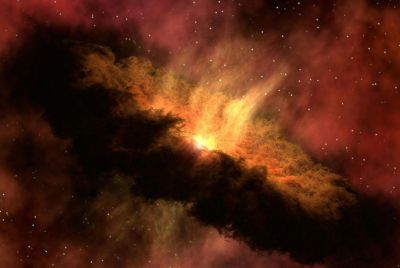Siberian Mystery Craters Explained: 'Dragon Breath' Methane Spikes Above Russia Linked to Climate Change

Large spikes of methane being released into the atmosphere above Siberia may be tied to the mysterious craters which have appeared in the landscape, according to a US scientist.
Dr Jason Box, a professor in glaciology at the Geological Survey of Denmark and Greenland, has highlighted increased levels of methane above the landscape.
The geologist's blog links the craters to climate change, as the melting Siberian permafrost is allowing the greenhouse gas to escape and create the enormous holes.
Using data from a ground-based climate observing station in Tiksi, a small town in the Sakha Republic on the Arctic Ocean coast, Dr Box discovered "high end" levels of methane. The readings were backed up by data from similar stations in Alaska and Canada, according to News.com.au.
The spikes, which Dr Box calls "dragon breaths", may well be connected to the unusual holes that have appeared in the Siberia landscape over the last month.
Three craters have been discovered so far. The first 80m-wide hole was spotted 1,800 miles east of Moscow in a barren permafrost stretch of the Yamal Peninsula, an area that translates as "the end of the world".
Another new opening, which has a diameter of around 15m, was also found in Yamal, a permafrost region of northern Russia - around 40km from Bovanenkovo, the nation's largest gas field.
The third crater, measuring around 4m in diameter, was discovered hundreds of kilometres to the east on the Taymyr Peninsula.
According to Andrey Plekhanov, a senior researcher at the Russian Scientific Centre of Arctic Research, the holes appeared within the last 24 months.
"We can be certain in saying that the crater appeared relatively recently, perhaps a year or two ago; so it is a recent formation, we are not talking about dozen years ago," he told the Siberian Times.
Methane is the remains of an event which happened around 50 million years ago, when an outbreak of a small green fern created the world as we know it. The outbreak of the fern sucked the carbon dioxide out of the air and replaced it with oxygen.
Climate change, however, threatened to reverse the effect. The methane trapped under the melting Siberia permafrost is being released.
"If we don't get atmospheric carbon down and cool the Arctic, the climate physics and recent observations tell me we will probably trigger the release of these vast carbon stores, dooming our kids to a hothouse Earth," Dr Box wrote.
Similarly to Siberia's craters, bubbles of methane have been recorded rising to the surface of the Arctic Ocean since 2011.
"Atmospheric methane release is a much bigger problem than atmospheric carbon dioxide release, since methane is around 20 times more powerful greenhouse gas," he added.
The Institute of the Earth Cryosphere has been studying the original giant opening. Chief scientist Marina Leibman, told URA.RU: "I have heard about the second funnel on Yamal, in Taz district, and saw the pictures."
"Undoubtedly, we need to study all such formations. It is necessary to be able to predict their occurrence," she added.
"Each new funnel provides additional information for scientists."
© Copyright IBTimes 2025. All rights reserved.

















